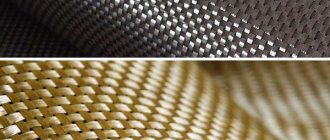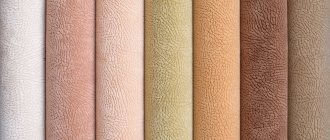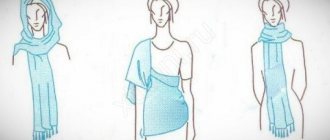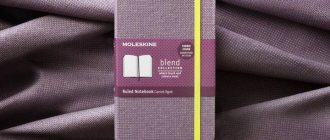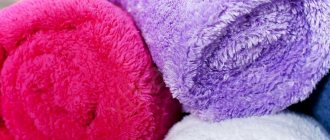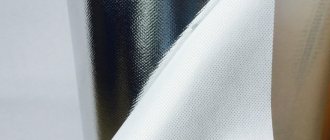Angora is not only the wool of Angora rabbits. Angora is also a fabric. It's not wool, but it's soft like wool and warm like wool. It can be used for sewing warm sweaters and hats, including knitted ones, as well as coats and cardigans...
Although angora is often confused with mohair, they are two different fibers. The confusion arose from the name itself. Not only rabbits bear the proud title of “Angora”, this is also the name of goats that produce mohair yarn. But in this article we are talking specifically about the hair of Angora rabbits, which is longer and more flexible than the hair of ordinary rabbits. Angora fibers are perfect for making noble textiles.
- North Africa and France are considered the homeland of Angora rabbits, where these cute animals began to be raised.
- At the very beginning of the last century, angora was mainly produced in China.
- Other popular producing countries include Chile, France, USA, India and Argentina.
Secrets of angora production
Before producing premium wool fabrics, the initial task is to collect the down of Angora rabbits. About three times a year, factory workers engage in shearing or plucking animals. The latter method is done by hand and is suitable for wool between 7 and 12 cm in length. However, some countries have abandoned plucking, claiming that it is inhumane to rabbits. A slightly simpler method is the process of collecting the shedding, however, in this case, unwanted plant fibers may get into the wool. To prevent deterioration in the quality of the down, rabbits must be brushed regularly, at least twice a week. This procedure helps keep the fur silky and does not allow the fluff to mat, which would be appropriate for non-woven felt material, and not for angora. On average, each rabbit produces about 300 grams of silky and weightless fluff per year.
The “prestige” of the future angora fabric varies depending on where on the rabbit’s body the wool is taken. For high-quality linens, you need down from the top and back of the rabbit, which is often longer and cleaner than the down from other areas. The neck and underside are suitable for collecting second-class wool, in which plant debris is often found. The shortest hair from the legs and buttocks is considered third-class. Grade 4 wool is generally considered unsuitable for making angora yarn.
Angora fabric: description
A whole group of fabrics is united under this name: angora includes knitwear and fluffy materials. They all have such characteristics as lightness, good warming ability, and beauty. The combination of special qualities is provided by fibers from the fur of Angora rabbits.
Their structure is similar to goat hair, from which mohair, the most valuable product, is obtained. But today, angora fabric, according to descriptions and reviews from manufacturers, is primarily knitted materials using rabbit fluff as a cheaper raw material.
Composition, properties, characteristics
Many people value angora for the fineness of its fibers and the incredible softness and fluffiness of the knitted fabric. With a silky texture, this wool is much lighter and warmer than other types of yarn because the angora fibers have a hollow core. Angora yarn is often mixed with merino wool to make the threads more elastic and increase the strength of the fabric. Angora itself is considered an inelastic fiber. In the mixed version, when other natural, artificial or synthetic threads are added to angora, the fabric turns out to be less soft, which is why the price of the fabric falls. To ensure that the wool does not lose its softness, but at the same time maintains a presentable appearance, an average of 20 to 50 percent angora is used in mixed fabrics.
Angora is distinguished from the wool of merino sheep by several characteristic criteria:
- Density: Angora has a lower weight (approximately 1.16 grams per cubic cm) compared to wool (1.33 grams per cubic cm);
- Fiber diameter: Angora is finer than wool, its fiber diameter is 11 microns. However, particularly fine wool options can compete with angora in this parameter. By the way, it is the yarn obtained from fine-wool sheep that unscrupulous manufacturers pass off as angora;
- Elasticity: This criterion affects how the process of processing fibers into yarn will be. Angora has less elasticity; its fibers slide and become electrified during processing. Wool fibers are quite elastic, so they are easier to recycle. This is the main reason for adding wool to angora.
Angora fibers of small diameter have hollow chambers filled with air. This feature makes the angora warm without adding extra weight to it. Products made from angora are very warm and comfortable to wear, and also feel dry due to the properties of the fibers. Therefore, angora is valued not only for the production of stylish casual clothing in a variety of sizes, but also for medicinal clothing that helps people with various diseases, such as sore joints.
Composition and characteristics
Raw materials for the manufacture of clothing and other products are obtained by combing or shearing. Chinese manufacturers do not ask about humanism. They take the down from rabbits by plucking it. But this consumer attitude towards animals did not go unnoticed. For some brands, this is a reason to refuse Asian raw materials.
The length of rabbit down hairs is 20 cm. Their structure is loose. The value is below 1.18 g/cm3. This is less than the same figure for cotton fabric. A small value ensures weightlessness of the products. They combine a silky texture with a pleasant shine.
The fibers of the material are slippery and become highly electrified during processing. As a result, since the production of yarn from pure angora is a complex task, products from mixed raw materials reach the consumer. There are a number of popular compositions (in%):
- angora and nylon - 70 and 30, respectively;
- angora, merino sheep fur, polyester threads - 50, 25, 25;
- goat or rabbit wool with other wool fibers and nylon - 40, 50 and 10;
- with natural silk - 70 and 30;
- with fibers of any kind of wool, viscose and nylon - 15, 10, 50 and 25.
If the fluff content is below 20%, the products are included in the budget category. They are available to a large part of the population. Materials with a share of natural fibers approaching 80% are expensive. But price and quality are comparable. The products do not stretch, are durable and very beautiful.
Attention! The optimal solution is to purchase products containing 25-30% angora.
In terms of heat retention and appearance, the products are as close as possible to expensive materials made from pure rabbit fluff.
How is it different from mohair?
As we have already mentioned, even today one can often find a false identification of such concepts as angora and mohair. The reason is simple: in the 19th century, angora was the name given to the long white hair of the Angora goat. These animals got their name in honor of the Turkish province where these goats were bred for several thousand years. However, angora is the down of Angora rabbits, and mohair (from the Arabic word “mukhayar”, or “goat fabric”) is the wool of Angora goats.
IMPORTANT! A simple recommendation on how to distinguish mohair from angora: pay attention to the manufacturer’s label. The marking of the fluff in the composition should be indicated there. The combination of the letters WA refers to rabbit fur, and the letters WN mean that goat fluff was used to create the fabric.
The appearance of mohair depends on the fiber, or rather its length. If a goat is sheared twice a year, this number ranges from 10 to 15 centimeters. If the haircut is carried out once a year, the fiber is much longer - from 20 to 30 centimeters. Compared to merino wool, mohair is a rather coarse fabric, so it is not very comfortable to wear on a naked body, although it is stronger than angora. However, there is a type of mohair called Baby Mohair, the yarn for which is created from the fine wool of small goats under one year of age. Things made from this material are incredibly soft.
What kind of angora wool is it?
This is Angora rabbit wool with soft and delicate bristles. Truly high-quality angora fibers have a diameter of about 12-16 micrometers. Animal fluff requires painstaking care; if it is not cleaned, it can easily mat on the rabbit.
Angora fabric
Angora is a fabric made from soft rabbit or goat down. It is very soft to the touch, creating a real feeling of coziness and comfort. Despite the fact that this fabric is considered capricious to care for, with proper care it will bring incredible pleasure.
Content
- Production and composition of angora
- Properties of Angora
- Angora and its varieties
- Application of Angora
- Angora care
Production and composition of angora
To produce angora, the fluff of Angora rabbits is used, which is a rather complex material in terms of processing. Its fibers glide strongly and become electrified. Due to this, in the composition of angora you can often find such additional materials as:
- viscose;
- acrylic;
- elastic threads;
- polyester.
Thanks to the combination of these fibers, it becomes possible to produce a modern mixed angora.
If we consider high quality angora, then it is a fabric to which merino wool is additionally added. With the help of this additive it is possible to obtain a material that is durable and strong, but at the same time quite soft.
Budget fabric is one in which angora fur contains no more than 20%, and all other components are viscose and polyester. But in terms of its warming and performance characteristics, it is in no way inferior to expensive angora. Due to the presence of a small amount of viscose in the composition, the material turns out to be quite fluffy.
Properties of Angora
Before buying angora, everyone should familiarize themselves with the basic properties of this material. Among them are the following:
- high hairiness, silkiness and softness;
- the presence of excellent heat-retaining properties;
- durability of the material due to the fact that when stretched and twisted the material does not deform at all;
- rich color palette;
- the possibility of draping in the process of making beautiful products;
- pleasant to the body and does not cause irritation and allergies due to hypoallergenicity;
- high elasticity and lightness, providing comfort when wearing angora items.
If we consider the negative aspects of this material, then there is one drawback. It is associated with improper care of the fabric. This can cause angora to quickly stretch if not washed correctly and quickly lose its warming properties. If the care is correct, then such a deficiency will not appear.
Angora and its varieties
Among the popular types of angora on the modern market, attention should be paid to the following types:
- melange is a woven fabric that combines synthetic and natural fibers, presented in contrasting shades. Thanks to this, you can achieve the effect of marble chips on the surface of the fabric;
- suprem is a natural angora knitwear to which lycra is added at the production stage. This material has high extensibility, lightness and elasticity;
- soft - artificial fabric, which is a real imitation of angora. The composition mainly contains elastane and polyester. There is no natural fluff in the composition. The only thing that makes the soft look like angora is its hairiness.
Therefore, when purchasing fabric such as angora, you should understand the types offered in modern markets.
Application of Angora
Clothes for adults and children are now produced from materials such as angora. These could be the following wardrobe items:
- skirts;
- dresses;
- coat;
- sweaters;
- hats;
- costumes;
- mittens;
- scarves.
But among the most common products made from angora, socks occupy a special place. Their ease of wearing with winter shoes is due to the fact that they are quite thin, but at the same time very warm. Compared to wool socks, they do not press at all. And children can move and play comfortably in such socks in winter.
Angora is often used to make blankets, stoles and shawls. They provide special comfort and warmth. For children, knitwear that contains angora is also often purchased.
The use of this material can also be observed in some interior items. Angora is often used to create upholstery for pillows, sofas, armchairs, and curtains can also be sewn from this fabric.
Angora care
You need to care for your angora carefully and carefully, taking into account certain rules.
- Hand washing is strictly prohibited. A special delicate mode used in washing machines is designed for this.
- The need for periodic dry cleaning, but no more than 1-2 times a year.
- To remove wrinkled areas and creases, the item should be hung over steam. It is prohibited to use an iron to avoid damaging the fabric.
- Angora items are stored in a special case that allows air to pass through.
If you take proper care of the fabric, angora items will last for many years of high quality.
#textile
Angora varieties
The type of yarn and fabric produced depend on the breed and color of the Angora rabbit. Each variety affects the shade of wool and determines the quality and quantity of yarn. The following five types are considered the most popular: French, satin, German, giant and English. Coat shades range from lighter shades such as gray or white to darker shades such as brown and black. It’s easy to guess that white yarn is the brand itself, but a wide palette of other natural shades eliminates this small drawback. It should also be remembered that angora does not lend itself very well to dyeing. The color of the fibers turns out to be quite light, since the fibers do not fully absorb dyes.
It is curious that there are unnatural imitations of angora, for example, fleecy soft fabric, which is created from polyester and elastane. It stretches well and is mainly suitable for upholstery; soft is often used for other interior tasks.
Features of Angora with Lurex
The option with the addition of lurex to the base of the fabric requires special attention. This angora looks elegant and creates a festive mood. From this fabric you can sew an outfit for a special occasion that will be remembered by everyone and will have a stunning effect. A huge selection of colors will definitely not leave you indifferent.
Angora wool - what products are made from angora
The potential of angora is not limited to the usual warm things, for example, fluffy mittens, scarves, socks, sweaters, cozy blankets and bedspreads. This wool fabric is used to create stunning dresses, skirts, hats and elegant, incredibly comfortable coats for both children and adults.
- It is worth remembering that products made from angora are not at all budget, but these expensive things are definitely worth the money.
What kind of fabric is this
Angora fabric, what is it and what can be sewn from it? Angora is a material obtained from the fluff of a special breed of goats and rabbits. Rabbit down is not very durable, so other fibers are introduced into the fabric to strengthen it. Sometimes manufacturers make fabric from the wool of fine-wool sheep, but it is inferior in all characteristics to real angora fabric.
Type of material
Natural angora down is colored white, gray and black. They lend themselves well to dyeing, so stores sell dresses and suits in various colors. Products made from the presented material can be distinguished by the retention of heat when the product is worn. Things made from natural angora fluff are so light in weight that they are almost weightless.
Type of fabric
History of the appearance of fabric
The original source of fiber for the unusual fabric was a special breed of goats with long hair, which were bred only in Turkey. They were brought to Europe and began to be actively bred back in the 16th century. The goat breed got its name from the capital of Turkey, Ankara, which in ancient times was called “Angira”, which later gave the goat breed a slightly distorted name - Angora.
Angora goat
Goats are small in size, but have very long hair, which feels soft and warm when touched. It has an unusual shine and glow, reflecting sunlight.
Angora rabbit
It is difficult to keep goats; they do not take root and feel good everywhere. Therefore, breeders bred the Angora rabbit, a small and unpretentious animal. If a goat produces 4-8 kg of wool when sheared, then a rabbit produces only 0.5-1.5 kg of fluff. Its length is also shorter: for a goat it is 25-35 cm, and for a rabbit – 8-10 cm. In its pure form, rabbit fluff is not used for the production of material; it will be fragile.
You might be interested in this Composition and application of ribana fabric: material characteristics
How is Angora wool obtained?
The fluff of an Angora rabbit is cut off with special scissors or electric cutters. It is not always plucked by hand. Some countries considered this method inhumane to animals and outlawed it. But the wool obtained in this way is considered high quality due to the good quality of the fur. The fur is taken from the rabbit when its length reaches 7-12 cm.
Angora goats produce a white and shiny fiber called mohair. It can look different, and it depends on how many times a year the animal is cut. If the wool is removed twice a year, then the length of the hair is only 10-15 cm, if once - 20-30 cm.
Note! When kids up to one year old are sheared, the result is very soft and fine wool of the highest quality.
Fashion trends in angora products
As you know, fashion is cyclical, so many trends return to the catwalks from the recent past. The same applies to current knitted sweaters straight from the 80s. Soft natural wool products look elegant and at the same time comfortable to wear. The question of buying or sewing that perfect fluffy sweater becomes especially acute in the autumn season with the onset of cold weather. All attention to the composition! A wool product should not only attract you visually, but also keep you warm and keep you warm on long winter evenings.
Advantages and disadvantages of fabric
The obvious advantages include the following features of Angora:
- Soft, pleasant to the touch fabric;
- Wearing comfort: adapts to your body temperature;
- Doesn't itch like some natural wool fabrics;
- Does not cause allergies, suitable for people with sensitive skin;
- Easy to dye to a different shade. However, angora rabbit fibers do not absorb dyes very well, so the dyed yarn ends up being a lighter color than you might expect;
- Light weight.
The fabric still has several disadvantages:
- Angora needs special care; you should read the recommendations in advance;
- May become deformed due to improper use;
- During active wear, pellets appear on the surface quite quickly.
- Affected by moths.
It is possible that for some these disadvantages will turn out to be advantages. Especially if the rules for caring for your favorite angora sweater do not cause stupor, but a willingness to learn new things and care for them with love.
Cost of fabric per meter
The TISSURA Fabric House presents natural fabrics containing angora. The cost of 100% French Angora varies from 10,300 rubles per meter. Mixed options from the Italian brand Agnona with the addition of merino wool and silk cost a little lower - about 8,000 rubles per sewing meter. More detailed descriptions can be found on our website.
Yarn Angora soft, description and characteristics
Yarn with 30% mohair content, made on the basis of acrylic thread - this is a unique combination of practicality and elegance. Natural mohair fibers give the finished items softness and delicacy, and the presence of acrylic allows the product to retain its color even after repeated washing. The main properties of such yarn are good quality and thermoplasticity. The advantages include volume, visually reminiscent of wool. The yarn is easy to dye, which makes it possible to obtain a variety of colors. The acrylic contained in the yarn retains heat well, and things made from it provide excellent warmth.
Since the yarn is of synthetic origin, it is resistant to fading and fading. In addition, it is quite light, does not cause allergies, and is not damaged by moths.
The high acrylic content allows the yarn to be used on knitting machines.
Recommendations for care and washing
Angora products should not be washed too often; try to do this only when absolutely necessary and by hand. You can slightly refresh the item by hanging it on the balcony. Be sure to read the manufacturer's recommendations for fabric care. If it is 100% angora, do not wash it yourself, use dry cleaning services, but choose a trusted, well-known company.
- Do not soak angora, at least for longer than 15 minutes.
If you must machine wash, choose the cold Wool or Delicate cycle. Don't forget to turn off the drying and spinning modes, and also increase the number of rinses.
- Give preference to liquid powders. In specialized stores you can even find special shampoos for angora. Forget about using bleaches and products that contain chlorine.
- Do not twist or wring out the item too much after washing, let the water drain. Otherwise, the product will stretch easily.
- The water temperature should not exceed 40 degrees, it is better to choose from 30 to 35.
- The main nuance: washing and rinsing should be done in water of the same temperature, so that the slightest temperature fluctuation does not cause the product to lose its shape.
- Do not dry the angora vertically or near heating appliances. We recommend drying it flat on a horizontal surface, such as terry cloth.
- Ironing angora products is not recommended. When dry, they must be stored properly in the wardrobe to avoid folds and creases.
Reviews
For the most part, people who have added angora clothes to their wardrobe leave positive reviews. They note the warmth and softness of the products:
Irina:
“I ordered a dress from 85% angora on the Internet. I liked it visually more than in the photo. Very laconic, even modest, quite suitable for every day. With the right selection of accessories you can create an interesting look. I was confused by the fact that the fabric shines on the inside, which is unusual for wool. It wears well, is comfortable, and doesn’t look bad when washed by hand.”
Svetlana Ryabko:
“I bought a fashionable angora coat. It contains merino wool and something else synthetic. The coat is not thin, but surprisingly light. I expected it to be difficult to care for. But in fact, dust and dirt practically do not stick to it. I think it will be enough to take it to the dry cleaner once every few years.”
Tatiana:
The angora coat is a fairy tale! A little maintenance is nothing compared to how it looks. Very elegant, refined, “expensive”. You can wear it to the best restaurant and you won’t be embarrassed. At work, all my colleagues were jealous. I advise everyone!

